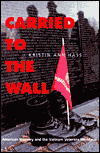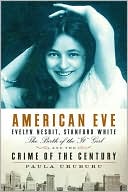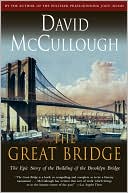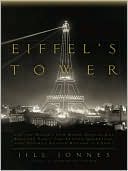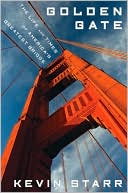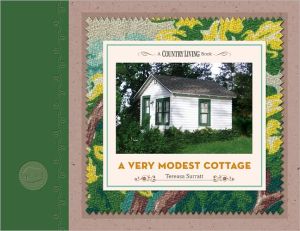Carried to the Wall: American Memory and the Vietnam Veterans Memorial
On May 9, 1990, a bottle of Jack Daniels, a ring with letter, a Purple Heart and Bronze Star, a baseball, a photo album, an ace of spades, and a pie were some of the objects left at the Vietnam Veterans War Memorial. For Kristin Hass, this eclectic sampling represents an attempt by ordinary Americans to come to terms with a multitude of unnamed losses as well as to take part in the ongoing debate of how this war should be remembered. Hass explores the restless memory of the Vietnam War and an...
Search in google:
On May 9, 1990, a bottle of Jack Daniels, a ring with letter, a Purple Heart and Bronze Star, a baseball, a photo album, an ace of spades, and a pie were some of the objects left at the Vietnam Veterans War Memorial. For Kristin Hass, this eclectic sampling represents an attempt by ordinary Americans to come to terms with a multitude of unnamed losses as well as to take part in the ongoing debate of how this war should be remembered. Hass explores the restless memory of the Vietnam War and an American public still grappling with its commemoration. In doing so it considers the ways Americans have struggled to renegotiate the meanings of national identity, patriotism, community, and the place of the soldier, in the aftermath of a war that ruptured the ways in which all of these things have been traditionally defined. Hass contextualizes her study of this phenomenon within the history of American funerary traditions (in particular non-Anglo traditions in which material offerings are common), the history of war memorials, and the changing symbolic meaning of war. Her evocative analysis of the site itself illustrates and enriches her larger theses regarding the creation of public memory and the problem of remembering war and the resulting causalities—in this case not only 58,000 soldiers, but also conceptions of masculinity, patriotism, and working-class pride and idealism.Virginia Quarterly ReviewIn this fascinating work, Hass studies the attempts by Americans to come to terms with the Vietnam War and its legacy in American culture.
Carried to the Wall\ American Memory/Vietnam Veterans Memor \ \ By Kristin Ann Hass \ University of California Press\ Copyright © 1998 Kristin Ann Hass\ All right reserved.\ ISBN: 9780520213173 \ \ \ Introduction\ A Restless Memory Of War \ teddy bear\ birthday card\ Christmas tree\ A mother travels to the Vietnam Veterans Memorial a couple of times a year, usually once around Christmastime and then close to her son's birthday. She comes with her pride, we might guess, and her grief, for sure—but she also brings a gift. A birthday card, a loved childhood toy, or a small Christmas tree decorated with strands of silver tinsel and bright red globes. This book is about the ways in which her gifts, and the many thousands like them, are not only poignant individual memories but also part of a noisy, unsolicited conversation at the Wall about post-Vietnam America. All of the still vital questions that surround the Vietnam War—all of the ways in which this war challenged so many citizens' ideas about what it means to be American—are asked and answered and asked and answered and asked again by the leaving of these gifts. Together, these gifts let us listen in on this unexpected outpouring about the war, its lost bodies, and its indelible mark on American patriotism. These things also demonstrate a new impulse in the making of American public memory—theabiding desire on the part of so very many visitors to the Wall to speak, publicly and privately, to the problematic memory of this war. Why?\ Things appear at the Wall because the Vietnam War has a restless memory. More than twenty years after its official end, it continues to haunt the American imagination. On April 22, 1994, a few hours after\ \ \ \ the death of Richard Nixon, Henry Kissinger was interviewed about the former president on national television. He spoke proudly of opening China and of treaties with the Soviet Union; he celebrated a record of softening relations with the very communists Nixon had built his career warning against. When asked if Nixon had been concerned that his long political career would be misconstrued, Kissinger did not talk about Watergate but instead asked Americans to come to peace with the memory of Vietnam. He did not ask that Nixon's waging of the war be reinterpreted; he simply expressed the hope that with the former president's death the memory of the Vietnam War could rest in peace.\ A few days later in Yorba Linda, California, after the elaborate and much documented westward journey of the former president's body, his flag-draped coffin was presented to the public for viewing in the Richard Nixon Library. Forty-two thousand mourners came, and many of them left personal offerings at a makeshift shrine near the library's entrance. Thousands of wreaths and flags were joined by handwritten notes, a Chinese scroll, a pink toy raccoon, and other personal mementos. This swelling collection of gifts in memory of Richard Nixon is a part of his political legacy. The war in which Nixon asked so many Americans to fight had a deeply unsettling effect on the nation. It changed the ways in which Americans imagined and understood their community, and in doing so it changed American memorial practices.\ The things carried to the funeral for Nixon represent an attempt by his mourners to articulate what his life and death mean for them. This need to articulate meaning is also what drives people to leave things at the Vietnam Veterans Memorial. The restive memory of the war changed American public commemoration because the memory could not be expressed by or contained in Maya Lin's powerful and suggestive design alone. The deep need to remember the war and the challenges that it presented to the idea of the nation, the soldier, and the citizen met in Lin's design and inspired hundreds of thousands of Americans to bring their own memorials to the Wall. These intensely individuated public memorials forge a richly textured memory of the war and its legacies.\ This book is about war and memory and bodies and things and the connections between them; it is an exploration of the thousands of offerings carried by ordinary Americans to the Vietnam Veterans Memorial. I believe that the liminal, contested place of the Vietnam War in\ \ \ \ American culture has disrupted the expectation that dead soldiers can be retired to a stoic, martyred memory of heroism and sacrifice and, in so doing, has disrupted American memorial practices. I see the gifts Americans bring to the Wall as part of a continuing public negotiation about patriotism and nationalism. These gifts forge a new mode of public commemoration that suggests ordinary Americans deeply crave a memory, or a thousand memories together, that speaks to ways in which this war disrupted their sense of American culture and their place in it.\ The impulse to make personal memories of difficult public grief emerged at the Vietnam Veterans Memorial, but it has been expressed throughout the culture and has opened up an amazing dialogue about the shape of the nation and the place of its citizens. It has changed memorial practices for Americans struggling to make sense of other painful aspects of their culture. For Americans struggling to face the enormous grief and the outcast social position of those suffering and dying from AIDS, the AIDS quilt is, n part, a response to the kind of memory made at the Wall. In the wake of the public rage at the Rodney King verdict in Los Angeles, a wall was constructed and inscribed with the names of all those killed in the violence, and people carried all kinds of personal gifts to this wall. In Crown Heights and Bedford-Stuyvesant, Brooklyn, walls have been painted with the names of those killed in urban violence. In Detroit a portrait of Malice Green was painted on a wall near where he was beaten to death, and for weeks people brought offerings to this spont meous memorial. And, most dramatically, in Oklahoma City more than a million gifts have been carried to the fences that surround the remains of the bombed-out Federal Building. Such memorial impulses reflect both a need to negotiate the public meanings of these deaths and a determination on the part of ordinary citizens to do this work themselves.\ This book is about death, but it is also about the failure of death. It is about the life sustained in the work of making American public memory. In order to reveal the problems of representation to which the things are a response, the first chapter sketches the fight to build the Vietnam Veterans Memorial. The story of the Vietnam Veterans Memorial is one of struggle over the representation of contested terrain. It is an allegory for the Vietnam War itself and the ways in which the war has stayed alive in American culture since the fall of Saigon.\ \ \ \ The second chapter is an exploration of the history of memorializing. It argues that the Vietnam Veterans Memorial and the things that people leave there are part of a continuing conversation about the relationship of individuals and bodies to nations and to patriotism and nationalism. The memorial also marks, I will argue, a shift in the way that the relationship between the individual and the nation is imagined and articulated. This is, I know, a lot of work for one memorial, but a close look at the history of memorializing war, and at the shifting ideas about nationalism and individualism that this history reflects, places this memorial in a developing conversation about individual sacrifice and national ideals. Paying particular attention to the memory of the American Civil War, French memorials to World War I, and the bridges and auditoriums that constitute American memorials to World War II, chapter 2 argues that the shifting shapes of these monuments reflect shifting ideas about bodies and nations that are implicitly expressed in and at the Wall.\ The third chapter explores American funerary traditions. It argues that rich traditions of grave decoration, which mirror much of what happens at the Wall, have shaped the ways in which people participate at the memorial. It argues that the working-class African Americans, Mexican Americans, and white ethnic Americans who fought this was have been bringing their complicated traditions of grave decoration to the Wall in order to negotiate the liminal position of the dead, and the veterans, in relationship to the nation. The history of these funerary traditions creates a dense context in which to try to understand a fishing lure or a Bible or the thousands of other things left at the Wall. The\ \ \ \ history makes the intensity of the response to the Wall and some of the things—crosses and photographs and holiday cards and even tea cups—more comprehensible. The people who come to speak at the Wall are not only claiming the national monument as their own, but they are also taking responsibility for making a memory of the war themselves. At the Wall, they are forging a memory of the war and its legacy that is far more complicated, more richly textured than any national memorial has ever been. The things are a loud—if not finely tuned—interjection into the memorial conversations with which we have defined the nation.\ The fourth chapter focuses on the particular symbolic work of the things within the collection. Most of the offerings left at the Wall seem to make a memory of a name on the Wall or the experience of a specific veteran, and yet taken together the objects, which I see as a response to a crisis of public memory, articulate a struggle on the part of ordinary Americans to be part of a conversation about how the war should be remembered and, therefore, part of a conversation about the shape of the nation. Using a handful of rough categories of objects to draw out the terms of this conversation, I argue that the objects, while not a coordinated effort of people with a clearly articulated vision of how to remember or reimagine the nation, are nevertheless the work of people who feel compelled to respond to the problem of remembering the war and the nation.\ The final chapter closely examines one category of artifacts left at the Wall: the POW/MIA artifacts. I argue that these articulate a wide range of anxieties not necessarily directly related to the war, that they are not only a means of forging a bridge across the ever widening gulf between patriotic nationalism and the rage inspired in veterans and their communities by the disregard with which the federal government had treated them but also a response to the changing social and economic structures of the late twentieth century that are displacing working-class men and women. Through missives left at the wall, these communities struggle to protest the inaction of the United States government without aligning themselves with antiwar, antigovernment, or, perhaps most important, antipatriotic positions. This chapter explores the mourning of unnamed losses—the loss of masculinity, patriotism, working-class idealism and pride—manifest in the tremendous outpouring for POWs at the Wall. It argues that the work of imagining the\ \ \ \ nation and of constructing public memory at the Wall has given Americans a powerful grassroots vernacular for negotiating the grief and the trials of this imagined community.\ Together these arguments are intended to help us hear the cacophony of voices speaking at the Wall. I want these arguments to help us listen in on this tremendous, unmediated community of citizens. I want to map out the terrain from which the making of memorials at the Wall has emerged. I want to tune our ears to the places where these things, alive with desire, strike common cords. I also, however, want this book to explore the lives of these things without pretending to contain them—both because they are produced by so many individual acts and because these acts seem to be very much a process—one of intervention or communication—rather than distinct pieces of a finished memory, or a new vision of America constructed at the Wall. All of my thinking about the things and the stories around them has convinced me that the best gift that I can offer in response to these gifts is a guide for carefully, and respectfully, witnessing what is alive at the Wall—the work of ordinary citizens getting their hands dirty in the forging of public memory. I hope that is what I have given here.\ \ \ \ \ \ \ Continues... \ \ \ \ Excerpted from Carried to the Wall by Kristin Ann Hass Copyright © 1998 by Kristin Ann Hass. Excerpted by permission.\ All rights reserved. No part of this excerpt may be reproduced or reprinted without permission in writing from the publisher.\ Excerpts are provided by Dial-A-Book Inc. solely for the personal use of visitors to this web site. \ \
AcknowledgmentsIntroduction: A Restless Memory of War11Making a Memory of War: Building the Vietnam Veterans Memorial72Discovering the Memory of Bodies: A History of American War Memorials343Seashell Monuments and Cities for the Silent: American Funerary Traditions644The Things: Remembering Bodies and Remaking the Nation875"You Are Not Forgotten": Mourning for America103Epilogue: Public Memory at the End of the American Century125Notes127Selected Bibliography157Index181
\ Marc LeepsonHass ties her varied themes together well, and she seems to have done a thorough job of researching her multi-disciplinary topic. -- VVA Veteran\ \ \ \ \ Virginia Quarterly ReviewIn this fascinating work, Hass studies the attempts by Americans to come to terms with the Vietnam War and its legacy in American culture.\ \ \ Choice MagazineAn arresting, touching, disturbing, and profound reflection on the Vietnam Veterans Memorial.\ \ \ \ \ Kirkus ReviewsA dissertation-like examination of why people leave many and varied objects at the Veterans Memorial in Washington. Hass (American Culture/Univ. of Michigan) sees several reasons behind the outpouring of objects—what she calls a "strong, multivocal, contradictory, unsolicited public response"—that have been left at the wall since it was dedicated on the Mall in Washington, D.C., in 1982. Some of the reasons are obvious: the emotional need to remember the dead; the patriotic and nationalist impulses to honor their service; the reaction by Vietnam veterans against the national cold shoulder given to them after they came home from America's most controversial overseas war. Others are less obvious: the fact that the memorial's simple design "tacitly asked people to respond" with "their own interpretations," and the grave-decorating traditions of African- Americans, Mexican-Americans, Italian-Americans, and some American Indians. In her chapter on American military memorializing history, Hass places great import on the aftermath of the Battle of Gettysburg, when for the first time "common American soldiers were buried individually in graves marked with their names." Hass ties these varied themes together well. Her writing, for the most part, is clean and clear. Only occasionally does she slip into turgid academes. Hass seems to have done a thorough job of researching this multidisciplinary topic. There is, however, one glaring error. Hass repeats the myth that more Vietnam veterans have committed suicide than were killed in the war. In an otherwise profusely documented book, she offers only an ambiguous citation for this assertion. But the truth is that the suicidestatement has no basis in fact. Hass proves much better at examining and explaining the reasons behind the myth that Vietnam kept American POWs after the war. A sometimes illuminating look at a unique national phenomenon. (16 b&w photos, not seen)\ \
